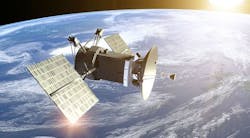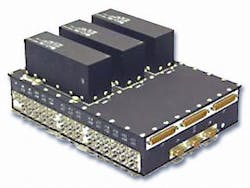Frequency Electronics eyes radiation-hardened atomic clock for space positioning, navigation, and timing (PNT)
Officials of the Air Force Research Laboratory's Space Vehicles Directorate at Kirtland Air Force Base, N.M., announced a $19.4 million seven-year contract to Frequency Electronics on Wednesday for the Space Qualified Atomic Clocks program.
Frequency Electronics engineers will build and demonstrate a space-qualified atomic frequency standard (AFS) system for satellites that require a high degree of synchronization. Enabling technologies from this project will lend themselves to timing applications in Air Force space systems, and lead ultimately to demonstration of a space-qualified clock aboard a spacecraft flight experiment.
The AFS must be able to survive and operate through harsh-launch environments including high g-loads, vibration, and pyro-shock events in addition to severe on-orbit thermal cycling.
Related: Three companies set sights on precision navigation that works independently of GPS
The AFS also will be initially space radiation hardened sufficiently to survive a two-year lifetime at middle earth orbit (MEO). The traceable PDR design is envisioned as fully radiation hardened and survivable up to a 10 year lifetime at MEO. The AFS traceable preliminary design review (PDR) design should be fully radiation hardened and survivable to a 10 year lifetime at MEO.
This radiation-hardened space-based atomic clock is for demonstration aboard the future Navigation Technology Satellite (NTS)-3 space experiment. Air Force researchers expect that one heritage Rubidium Atomic Frequency Standard (RAFS) and two AFS clocks plus thermal control will fit into a hosted payload port of an evolved expendable launch vehicle (EELV) secondary payload adapter (ESPA) ring.
Frequency Electronics experts will develop the AFS hardware to be closed enough eventually to become a product of the U.S. GPS Project Office, yet open enough for on-orbit experiments like discovering the sensitivities of the AFS to environmental changes and satellite maneuvers, exploring local position invariance and time dilation effects, and understanding and mitigating unhealthy operational concepts of the overall timing system.
Company engineers also will develop the AFS to be impervious to cyber attacks -- or cyber-hard by design for key mission-critical functions. They also will conduct a manufacturing readiness assessment for system manufacturability and affordability.
On this contract Frequency Electronics will do the work in Uniondale, N.Y., and should be finished by September 2025. For more information contact Frequency Electronics online at www.freqelec.com, or the Air Force Research Lab's Space Vehicles Directorate at www.kirtland.af.mil/Units/AFRL-Space-Vehicles-Directorate.
Ready to make a purchase? Search the Military & Aerospace Electronics Buyer's Guide for companies, new products, press releases, and videos

